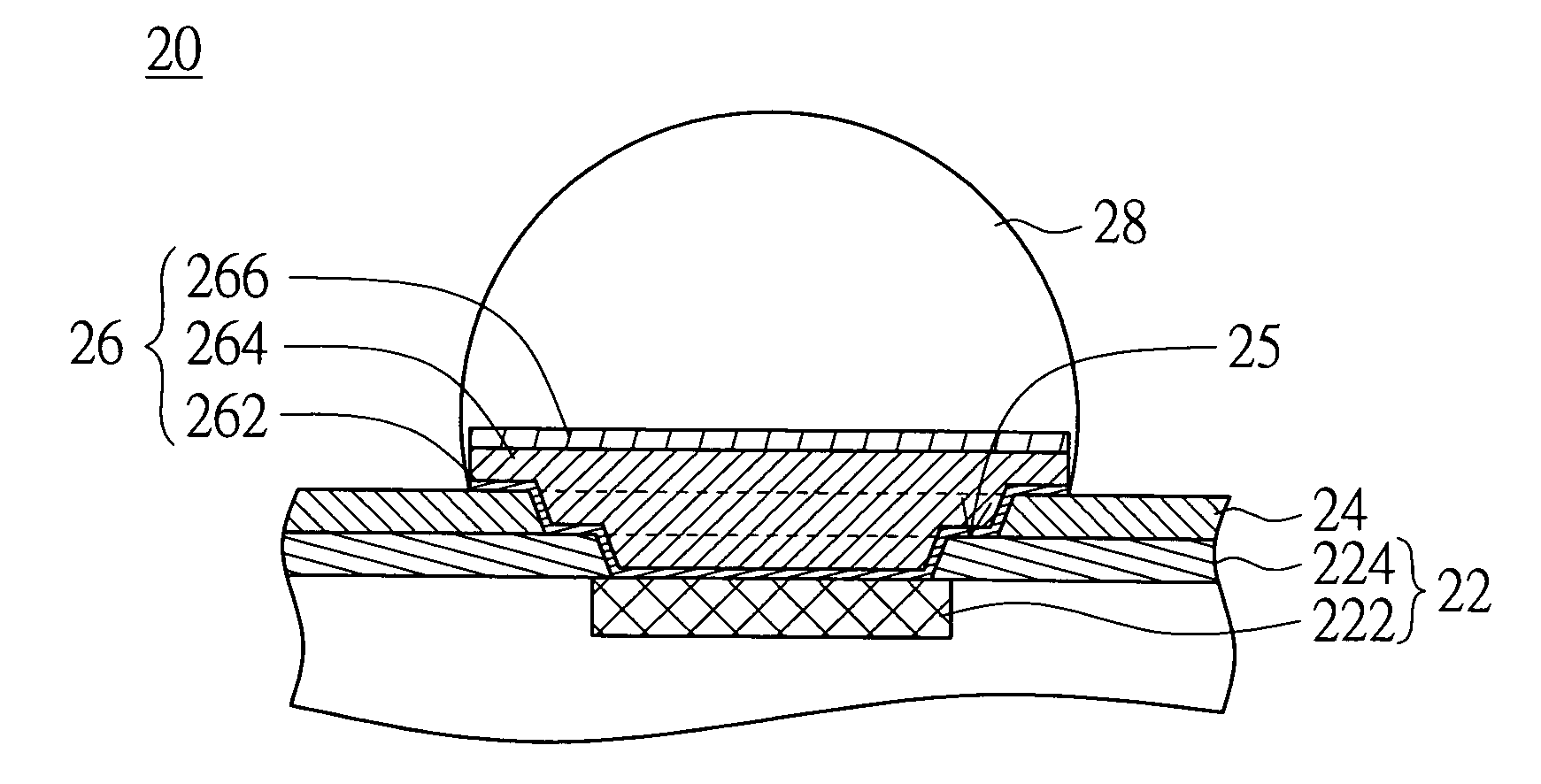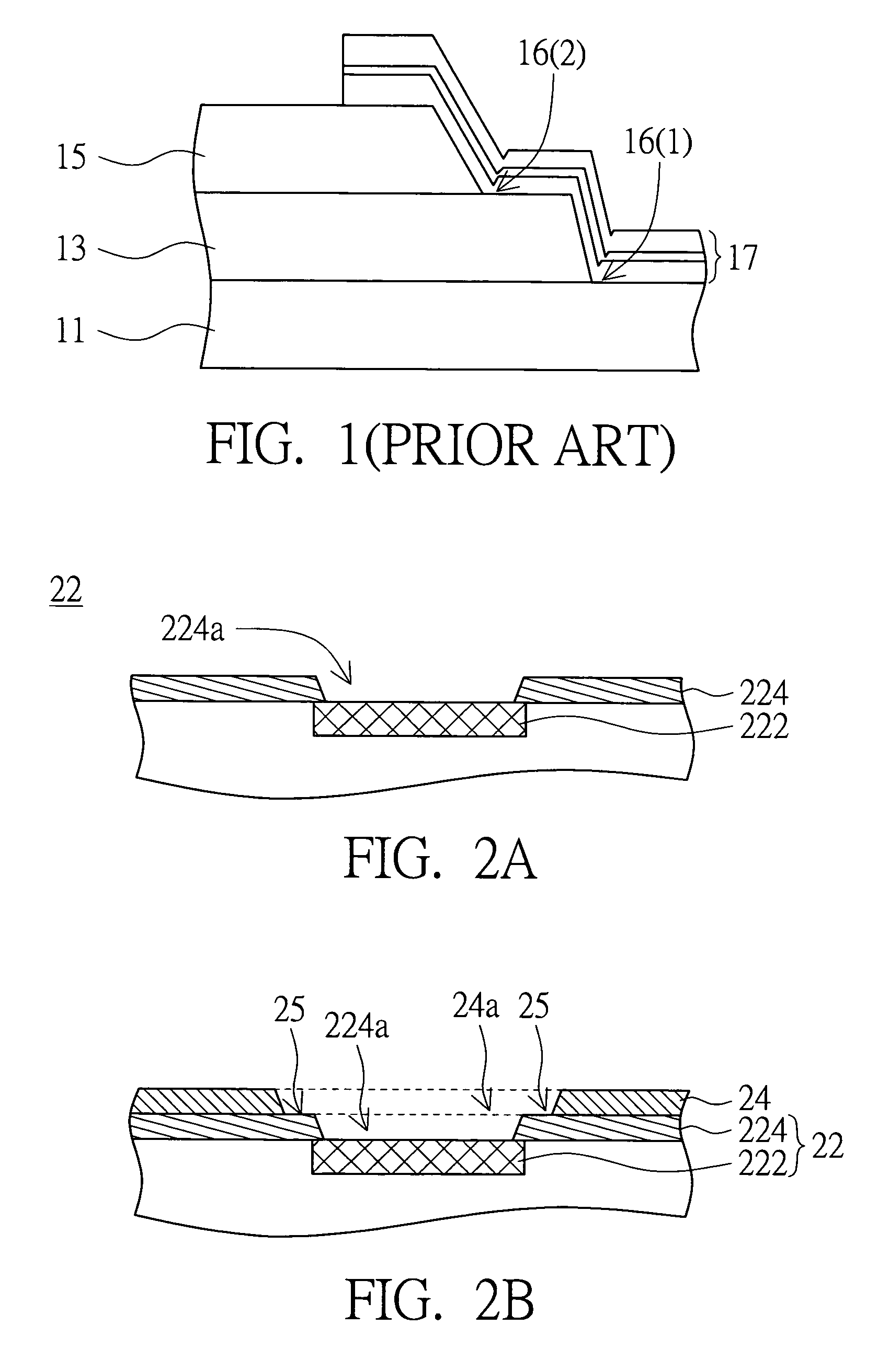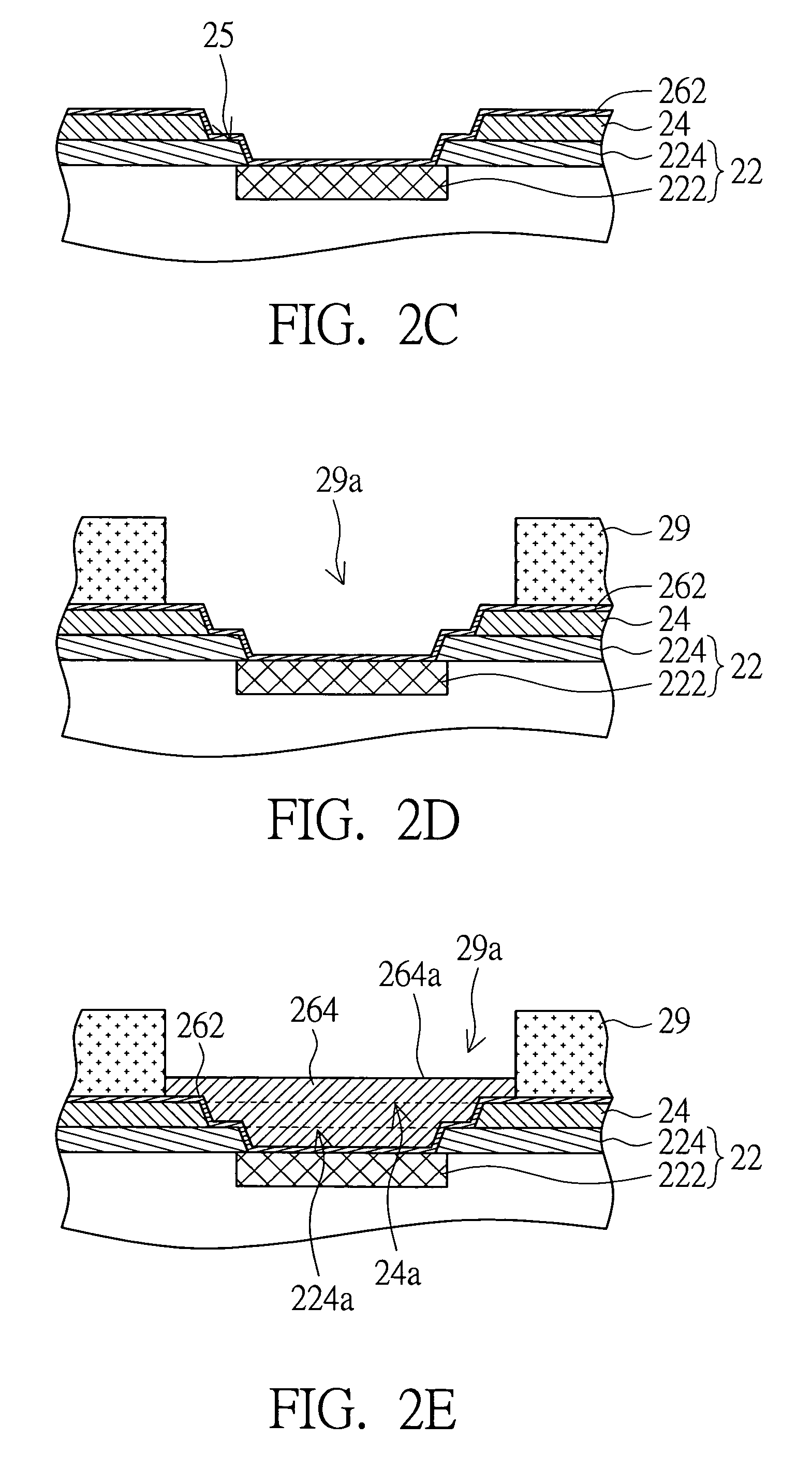Method of fabricating a wafer structure having a pad and a first protection layer and a second protection layer
a technology of protection layer and wafer, which is applied in the field of wafer structure, can solve the problems of easy cracking, severe tests of heat dissipation and operational stability of semiconductor packages, and jeopardizing the quality of semiconductor packages, so as to improve the yield rate and quality of bonding
- Summary
- Abstract
- Description
- Claims
- Application Information
AI Technical Summary
Benefits of technology
Problems solved by technology
Method used
Image
Examples
first embodiment
[0039]Please refer to FIG. 2A˜2G at the same time. FIG. 2A is a perspective of a wafer according to a first embodiment of the invention. FIG. 2B is a perspective of a second protection layer formed on the first protection layer in FIG. 2A. FIG. 2C is a perspective of an adhesion layer formed on the wafer and the second protection layer in FIG. 2B. FIG. 2D is a perspective of a photo-resist layer formed on the adhesion layer in FIG. 2C. FIG. 2E is a perspective of a barrier layer electroplated onto the adhesion layer in FIG. 2D. FIG. 2F is a perspective of a wetting layer formed on the barrier layer in FIG. 2E. FIG. 2G is a perspective after the photo-resist layer and part of the adhesion layer in FIG. 2F are removed.
[0040]The method of fabricating a wafer structure according to a first embodiment of the invention includes the following steps. First, a wafer 22 having a pad 222 and a first protection layer 224 is provided. The first protection layer 224 covers the wafer 22 and has a ...
second embodiment
[0050]The present embodiment of the invention differs from the first embodiment in that the T-plug or the U-plug is formed by the wetting layer. Besides that, the method of fabricating wafer structure according to the second embodiment of the invention also sets out from the steps of providing a wafer, forming a second protection layer, forming an adhesion layer and forming a photo-resist layer. These steps are similar to those of the first embodiment, as indicated in FIG. 2A˜2D, and are repeated here.
[0051]Please refer to both FIGS. 4A and 4B. FIG. 4A is a perspective of a barrier layer being formed on the adhesion layer according to a second embodiment of the invention. FIG. 4B is a perspective of a wetting layer being formed on the barrier layer of FIG. 4A. After performing the forming steps mentioned in the above, the fabricating method of the present embodiment of the invention then proceeds to the step of electroplating the barrier layer. As indicated in FIG. 4A, a barrier lay...
third embodiment
[0056]The present embodiment of the invention differs from the first embodiment in the disposition of the photo-resist layer and in the way of forming the UBM layer. Other similarities are not repeated here. Please refer to FIG. 6A˜6G. FIG. 6A is a perspective of a wafer and a second protection layer according to a third embodiment of the invention. FIG. 6B is a perspective of an adhesion layer being formed on the wafer and the second protection layer in FIG. 6A. FIG. 6C is a perspective of a barrier layer being formed on the adhesion layer in FIG. 6B. FIG. 6D is a perspective of a wetting layer being formed on the barrier layer in FIG. 6C. FIG. 6E is a photo-resist layer being formed on the wetting layer in FIG. 6D. FIG. 6F is perspective after the part of the wetting layer, the barrier layer and the adhesion layer exposed outside the photo-resist layer in FIG. 6E are removed. FIG. 6G is a perspective after the photo-resist layer in FIG. 6F.
[0057]The method of fabricating wafer str...
PUM
 Login to View More
Login to View More Abstract
Description
Claims
Application Information
 Login to View More
Login to View More - R&D
- Intellectual Property
- Life Sciences
- Materials
- Tech Scout
- Unparalleled Data Quality
- Higher Quality Content
- 60% Fewer Hallucinations
Browse by: Latest US Patents, China's latest patents, Technical Efficacy Thesaurus, Application Domain, Technology Topic, Popular Technical Reports.
© 2025 PatSnap. All rights reserved.Legal|Privacy policy|Modern Slavery Act Transparency Statement|Sitemap|About US| Contact US: help@patsnap.com



